
AIRCRAFT GENERAL (ATA 5-18) MODIFICATIONS (516)
AeroSHARK - Cutting emissions with sharkskin technology
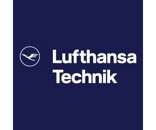
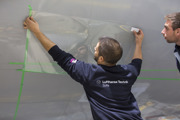

The only certified and proven sharkskin technology
AeroSHARK is a durable bionic film that successfully imitates the skin of sharks and optimizes the airflow, enabling significant fuel savings and CO₂ reductions.
Just by using sharkskin technology, the global fleet of long-haul aircraft could save billions of euros.
Dual CMA9000 FMS installation on Airbus A300-600
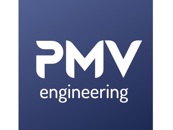
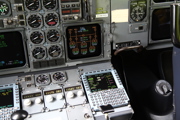

PMV Engineering avionics team brings a huge project to success with the EASA STC for the Installation of a dual FMS CMA-9000 on A300-600 aircraft.
This STC is the result of a close cooperation with Esterline CMC Electronics and the operator over the last 10 months. PMV Engineering demonstrated its ability to drive this project, including full flight simulator sessions and flight testing with EASA
AED installation


The use of automated external defibrillators (AED) is essential to increase the chances of survival in case of a cardiac arrythmias such as ventricular fibrillation (VF) and non-perfusing ventricular tachycardia (VT) when used in the first 10 minutes.
AMC1 CAT.IDE.A.220 (b) (4) stipulates that the aircraft operators should carry automated external defibrillator (AED) on board all aircraft equipped with a first-aid kit and required to carry at least one cabin crew.
BAM 350 Eagle Eye, Maritime Surveillance Aircraft
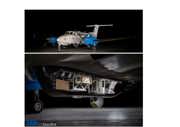
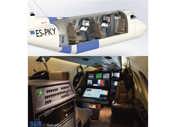
Estonia is the first country to get the new MSS 7000 system, after operating the MSS 6000 for more than 10 years. The new MSS 7000 system for Estonia has installed on board a new Beech King Air 350ER aircraft.
B737 NG SBAS GNSS Aircraft Integration by Fokker Services



Overview
Fokker Services offers a certified solution for the integration of Satellite-Based Augmentation Systems (SBAS) and Global Navigation Satellite Systems (GNSS), supporting modern navigation, surveillance, and performance-based operations. This upgrade ensures compliance with global mandates while delivering operational efficiency and precision.
LED Logo Light to replace Halogen based logo lights


Talon Aerospace LED logo light Assemblies to replace Halogen replacement.
Do you recognize the following problems with your existing logo lights?
-
Halogen bulbs are replaced frequently
-
Lights are installed in difficult to reach areas and requires use of cherrypicker or lift
-
Lens sealant does not have sufficient time to dry, leading to moisture ingress within horizontal stabilizer
-
Transformer requires frequent replacement
-
Incandescent bulb color temperature changes appearance of corporate logo
Get Light-Years ahead of your competition!
Talon Aerospace LED logo light assemblies are designed to allow for plug and play replacement for the existing HLX64621 halogen bulb based logo lights. Talon uses a rack to replace the OEM logo light housing. The LED module and transformer assembly are mounted to the rack. The OEM aircraft connector is mounted on the transformer assembly, making the LED logo light assembly plug and play.
The lens, lens gasket and hardware can be retained from the OEM unit, but Talon does make replacement lenses available for most applications. The Talon logo light assemblies operate on 115VAC 400Hz aircraft power. A transformer within the assembly steps the voltage down to 14V to power the LED module. All internal connectors are circular mil-spec connectors.
Approved Model List:
- Airbus A320
- Airbus A330
- Airbus A340
- Boeing B737NG
- Boeing 757
- Boeing 777
Planned for Approval:
- Embraer Embraer E170, Embraer E175, Embraer E190, Embraer E195
Talon and Proponent
Proponent is the exclusive global distributor of all Talon Aerospace products.
This relation provides customers with the latest generation of LED lights.
Proponent
Proponent is the new identity representing Kapco Global and Avio-Diepen as one united company, and the unique capabilities that the new organization brings to the aerospace market. With extensive experience in supporting the MRO, OEM and airline markets, our organization offers innovative inventory and supply chain management solutions to OEM and aftermarket customers.
Aircraft Interface Device (AID) Boeing B787 Dreamliner for EFB

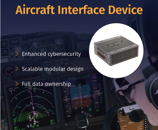

Airlines are asking for an alternative solution for the integrated Electronic Flight Bag (EFB) on Boeing 787, Fokker Services Group develops a flexible solution based on Aircraft Interface Device (AID)
Transmitting Portable Electronic Devices (T-PED) Tolerance on B777

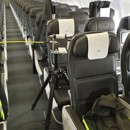
After TPED tolerance STCs for the use of Wifi aboard A320 family, B737, and ATR 42 / 72 aircrafts, PMV Engineering has completed its TPED STC collection with B777 models. This last EASA STC (ref. 10061590) is aligned with the latest EASA requirements and Eurocae/RTCA standards and allow gate to gate operation (including all phases of flight without restrictions) for the airlines.
Transmitting Portable Electronic Devices (T-PED) Tolerance on ATR42 - ATR72

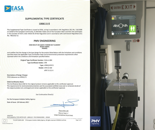
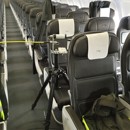
PMV Engineering (EASA DOA 21J.487) achieved TPED tolerance demonstration for ATR42 and ATR72 aircraft, thus allowing the installation of wireless IFE and the use of wireless devices for all phases of flight (including take off and landing in all weather conditions).
TPED tolerance demonstration on B737 aircraft

EASA STC for TPED (Transmitting Portable Electronic Devices) tolerance demonstration on the following B737 aircraft:
- 737-600
- 737-700
- 737-800
- 737-900
- 737-900ER


